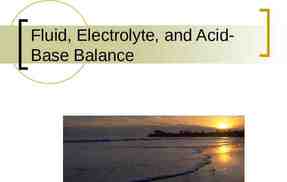Lecture 14: Monetary Policy
27 Slides1.11 MB
Lecture 14: Monetary Policy
Bank of England 1694 Granted monopoly on joint stock banking by Parliament in return for war loans. Not an invention of economists, started off as a powerful bank that was able to demand that other banks held deposits in it. Did not have government monopoly on note issue, but achieved it through its monopoly power.
Banks of the United States Loosely modeled after Bank of England First Bank of the United States 1791-1811, was promoted by Alexander Hamilton Second Bank of the United States 18161836. President Andrew Jackson called it a “dangerous monopoly,” conflict with Nicholas Biddle, president. Suffolk System, Massachusetts
Nineteenth Century Problems and Solutions Privately issued bank notes Discounts on notes Banking panics associated with business depressions National Banking System, 1863, mostly ended panics until 1907. 1907 panic saved by J. P. Morgan Under National Banking System inflexible money supply, strongly seasonal interest rate Led to creation of Federal Reserve
Federal Reserve System - 1913 Created flexible money supply, responding to business situation Fed was lender of last resort 12 Regional banks, each presides over a district. Two in Missouri Board of Governors in Washington DC
Board of Governors 7 members, 14-year terms Chairman has 4-year term. Traditional power of the chairman Independent of executive and legislative branch. An “independent central bank.” Chairman must make semiannual monetary policy reports (Humphrey Hawkins)
Banking Panic of 1933 Despite Fed’s lending, a banking panic forced Roosevelt to declare a banking holiday Led to establishment of Federal Deposit Insurance Company (FDIC) opened doors in 1934, funded by premia paid by banks No U. S. panics since
European Central Bank Founded 1998 Eurozone members and non Eurozone members Had to construct Eurozone data for first time President Jean-Claude Trichet since 2003 Otmar Issing
New Euro Currency Currency first issued January 1, 2002 “The parallel lines [in ] “represent the stability of the euro.”
Bank of Japan Toshihiko Fukui, Governor since 2003 Interest rates have been brought down virtually to zero Purchase of government bonds to try to stimulate economy Proposals to buy foreign bonds, dollars Japanese banks sitting on unlent funds
Nikkei Index Monthly 1984-I to 2004-II 45000 40000 35000 Nikkei Index 30000 25000 20000 15000 10000 5000 0 1980 1985 1990 1995 Year 2000 2005 2010
Monetary Problem in Japan Inflation often negative Gensaki rate zero Real rate often substantial, Bank of Japan can do nothing Svensson proposal to peg yen at, say, 160 to dollar, unheeded by conservative B of J
Reserve Requirements Depository Institutions Deregulation and Monetary Control Act of 1980: 12% reserves on demand deposits, 3% on time Act allows Fed to change reserve requirements, on demand deposits within range 8% and 14%. Banks must meet requirements over two-week statement period Reserves are in cash or balances with federal reserve. Fedwire
FOMC Federal Reserve Board, President of New York Fed, and four other reserve bank presidents. Meets roughly once a month Since 1994, has made immediate announcements of policy decision Since 1997 has made immediate announcements of federal funds rate target
Trading Desk, FRBNY Buys and sells Treasury bills August 1999 FOMC gave desk authorization to trade in mortgage-backed securities FOMC is studying allowing desk to trade in debt of states, or foreign countries.
Discount Rate and Federal Funds Rate Discount rate is rate on loans Fed makes to member banks. Borrowing is a privilege, not a right Federal funds rate is rate of interest banks pay to each other when they lend excess reserves. Repo rate is collateralized, hence tends to be a little lower.
Changed Definition of Discount Rate Prior to 2003, discount rate was usually 50 basis points lower than the funds rate Then, borrowing at discount window carried stigma On Jan 9, 2003, Fed raised discount rate above funds rate, eliminating stigma Primary discount rate (sound banks) about 100 basis points above funds rate Secondary discount rate (banks that do not qualify) 50 points above primary discount rate
Federal Funds Rate and Inflation Rate Monthly 1954-VII to 2004-I 25.00 20.00 15.00 Funds Rate 10.00 Inflation Rate 5.00 0.00 1950 1960 1970 1980 -5.00 Year 1990 2000 2010
Real Federal Funds Rate Monthly 1954-VII to 2004-I 12.00 10.00 8.00 6.00 4.00 2.00 0.00 1950 1960 1970 1980 -2.00 -4.00 -6.00 Year 1990 2000 2010
Stabilization and 1980 and 19812 Recessions New Fed Chairman Paul Volcker thought inflation had gotten out of hand. Created “the great recession” that stopped inflation Many foreign countries similar experience
Stabilization and 1990-1991 recession Fed was misled by inaccurate GDP numbers, didn’t see recession coming. First started cutting interest rates Dec. 1990, after recession had been on for six months
The 2001 Recession Not brought on by rising interest rates to curb inflationary pressure A post-stock-market bubble recession Dramatic cuts in rates starting early 2001 Recession short lived (March-November) Housing boom started by rate cuts
































